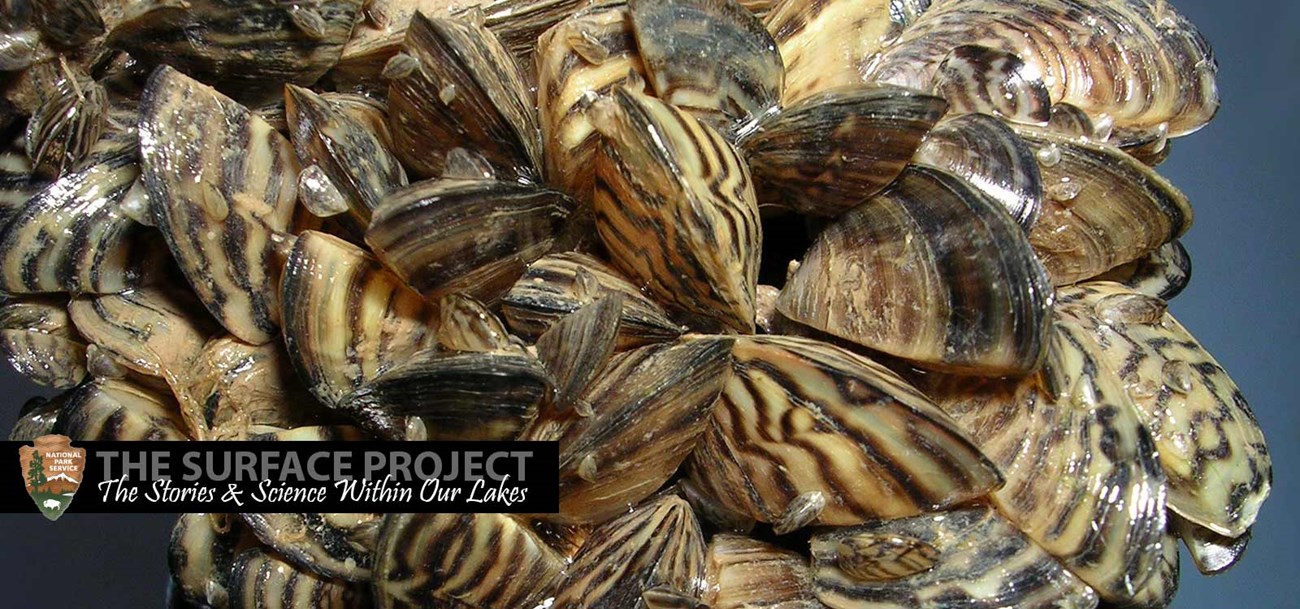
An Aquatic InvasionFrom the driest deserts to the lushest rainforests to frigid polar regions, ecosystems around the world each have a natural system of checks and balances. Within an ecosystem, plants and animals have evolved together over millennia, developing specific adaptations to thrive in their habitat and coexist with each other. Predators, prey and nutrient levels keep each other in check, ensuring that the natural functioning of an ecosystem stays relatively stable over time. However, history has proven that some species move, migrate, and get transported from their native habitat - a seed in a shoe, a fisherman releasing fish into a small pond, or larvae in an undrained boat bilges - and that's when trouble can begin. The introduction of a new species can upset an ecosystem’s delicate natural balance. These types of transported species have many names: invasive, nuisance, non-native, non-indigenous, alien, and exotic. But the name doesn't matter – what matters is their impact. Many invasive species cause havoc on their new ecosystem as a result of rapid reproduction, lack of predators in the new habitat, and the ability to take advantage of a wide variety of food sources and habitats. Invasive species also frequently create negative economic impacts through costs of control measures or causing the loss of economically valuable resources. 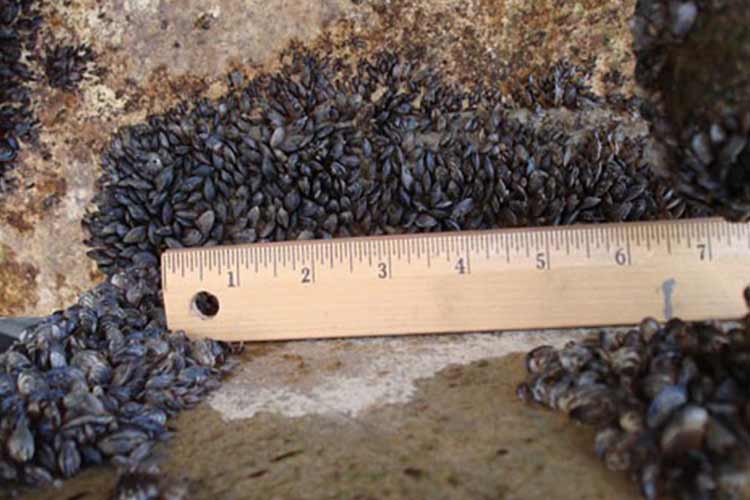
The tiny invaders known as quagga mussels. Lakes Mead and Mohave have a particularly troublesome invader: the quagga mussel (dreissena bugensis). These mollusks vary in size – from microscopic to the size of a nickel – and since their arrival, they have had a huge impact on the native habitat, park management, infrastructure and recreation. Native to the Ukraine, quagga mussels were transported to Canada and the United States in ballast tanks. Ocean vessels use ballast tanks to keep their stability, similar to how one might use a weight to hold down a canopy or a sign. Once in the United States, quagga mussels were moved from river to river and lake to lake by recreational boaters and commercial river boats, often in bilges. It is currently estimated that over 50 million gallons water are being transported and emptied into U.S. waters daily. 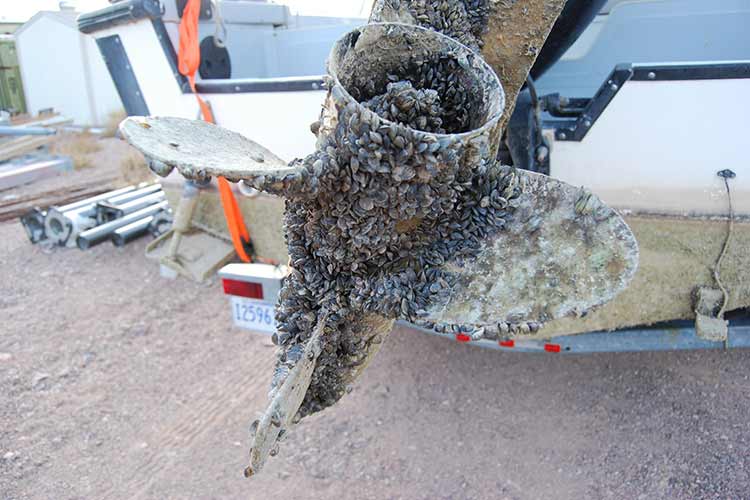
Quagga mussels will damage equipment. Due to the water temperature and clarity in lakes Mead and Mohave, quagga mussels have adapted and can spawn multiple times per year. Quagga mussel larvae get sucked into boat engines and water treatment plants by the billions. As adults, these mussels will cling to nearly anything including rocks, boat hulls, infrastructure and machinery. As their numbers have grown, they have begun to clog the giant intake pipes that draw water from Lake Mead requiring expensive cleaning regimens and repairs. Humans aren’t the only ones that are troubled by this new invader; other local species are suffering too. Quagga mussels are filter feeders, which means that they suck water into their shells, eat tiny algae and plankton particles suspended in the water, and then push the newly-cleaned water back out. The first problem with this is that they’re outcompeting native filter feeders for food. But an even bigger issue is that the more water quagga mussels filter, the more the water quality and other aspects of the ecosystem - like nitrogen, phosphorus, and oxygen levels – can change. While this might not seem like a problem from a boater’s or swimmer’s perspective, it could affect conditions for other lake species. Unfortunately, quagga mussels will most likely never leave lakes Mead and Mohave. However, efforts are being made to prevent the introduction of other invasive species to the Lake Mead National Recreation Area. Through the collaboration of the National Park Service, Nevada Department of Wildlife, Bureau of Reclamation, Southern Nevada Water Authority, Arizona Game and Fish Department, and U.S. Fish and Wildlife Service, these agencies have put programs to combat invasive species. This includes ongoing research and the adoption of the "Clean Drain Dry" program. World Travelers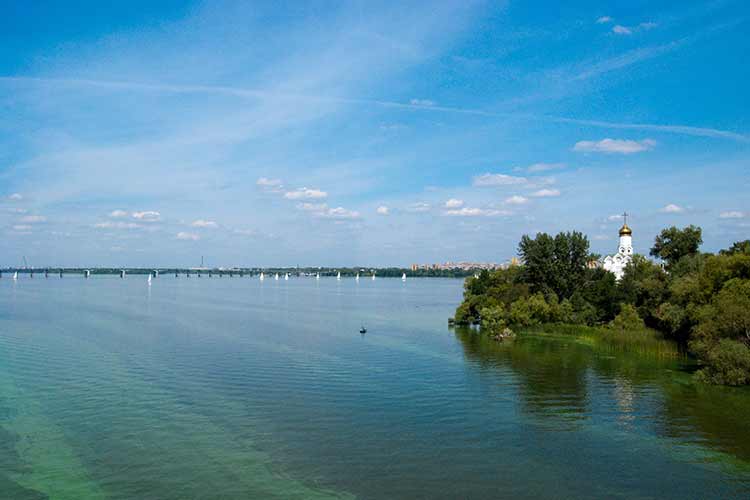
Quagga mussels came to the U.S. from the Dnieper River, one of Europe's largest rivers. Introduced to the Great Lakes in 1986, it took almost 20 years for quagga mussels to be transported across the United States and be discovered in the Lake Mead National Recreation Area. Since their discovery in 2007, many have asked "How do we get rid of them?" This is a great question to pose to students and life-long learners. Read MoreA Challenging Opponent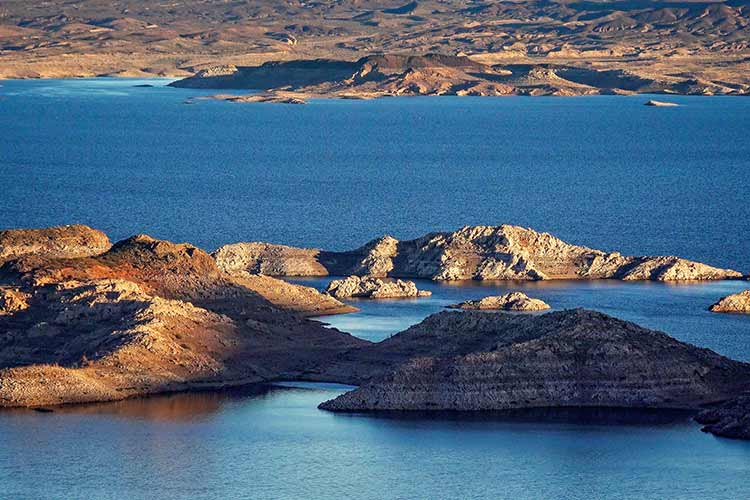
Keeping a lake the size of Lake Mead clear of invaders is a big job. Once a species invades an ecosystem it can be very hard, if not impossible, to remove. Keeping these unwelcome visitors in check is often a continuous challenge. At Lake Mead, teams of dedicated individuals are using science and hard work to combat these loathed guests but it’s a big job and requires a series of calculated steps. |
Last updated: April 5, 2017
